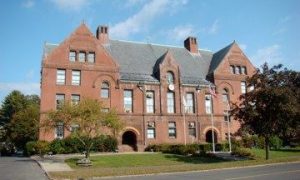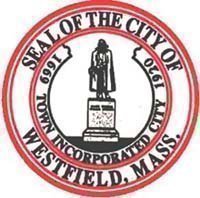 WESTFIELD – Every family has to make decisions on where to spend money and set priorities. Is it something that needs to be done this year or next year or can it wait for a few more years? Do you spend money on a family vacation or fix the leaking roof?
WESTFIELD – Every family has to make decisions on where to spend money and set priorities. Is it something that needs to be done this year or next year or can it wait for a few more years? Do you spend money on a family vacation or fix the leaking roof?
Those same decisions, on a much grander scale, are made by city officials. Can the city afford to commit funding now to projects, especially those that improve the quality of life of residents, or are those projects deferred to a later time? There are immediate needs with high priorities, but which ones are done in this fiscal year budget or the next one or the budget after that?
Few families have formal strategic home improvement plans. You plan to repave the driveway this year, until you find out that the furnace needs to be replaced, blowing the capital improvement budget. Do you use the equity earned over time to take out a second mortgage to pay for improvements?
City officials do the same financial juggling as residents: do you spend because a project needs to be done or do you push it back a year? Do you defer work so you have money to put aside in the bank for a rainy day?
Mayor Daniel M. Knapik has a long list of projects and a strategic plan when those projects will be done and how the city will finance that work. But the municipal budget and spending decisions are based on the city’s budget of about $120 million.
“The city, considering the state of the economy we are presently experiencing, is positioned for a really good future,” Knapik said. “”We’ve taken care of business, got projects done and we’ve put more money in the bank (stabilization account), so the ship is holding together quite nicely.”
Knapik said that the city has taken steps, such as putting aside funds in the stabilization account, which improves the city bond rating grades. The city has received two rating upgrades in recent years and is now a 1-A community. The higher the rating the lower the interest on bonds, a primary vehicle for financing projects.
“We’ve come a long way in a short time,” Knapik said. “We compare favorably with AAA (bond rating) communities in the region. The city is in good shape for AAA bond rating consideration. I think we’re looking, in 18 months, to get an AA or AAA rating.”
“That has happened because in 2007 we had $200,000 in stabilization,” Knapik said. “Now, we have $6.5 million between stabilization and free cash and there is another $1.5 million in reimbursable money coming back to the city from FEMA (Federal Emergency Management Agency), the FAA (Federal Aviation Administration) and the Mass Development Agency.”
The city’s current annual debt is about $5.4 million, which is in the $5 to $7 million range set by the City Council’s Finance Committee for debt. That debt includes short-term borrowing (BANs or Bond Authorization Needed), money borrowed after the City Council approves a bond. Those bonds cannot be sold until the project is completed, typically 18 months to two years after the bond approval vote by the council.
“Eighteen months is the target to take a BAN into a long-term bond,” Knapik said.
“The city’s goal is to maintain our annual long-term debt at between $5 and $7 million,” Knapik said. “In 10 years, 85 percent of our present debt will be retired, so the key is to watch as bonds drop off and plan for new borrowing.”
That list of projects that will be financed through bonds and short-term borrowing is lengthy. It includes construction of a new $36 million elementary school with a local cost of $8 million after reimbursement from the Massachusetts School Building Authority, construction of an $8 million senior center, $10 million for renovations of City Hall, Westfield High School, Westfield Vocational Technical High School, and the Westfield Athenaeum. Other projects include the Green Energy Program to reduce the city’s energy consumption, work that’s near completion.
The city also plans to extend the Columbia Greenway, to replace the infrastructure of the Gaslight District neighborhood between Elm and Washington streets and between Franklin and Court streets and reconstruct the streets. Another infrastructure project, slated for 2014, is the Old Town Project, repaving streets off Main Street and along East Silver Street, as well as upgrading water lines and other utilities.
Also pending as future projects are the reconstruction and reconfiguration of Western Avenue (2015) and East Mountain Road and Route 187 (2014).
Knapik said he considers road and infrastructure projects a quality of life issue, but that quality of life includes much more.
“We’ve managed to do some park enhancement including a complete renovation of Chapman Playground. We’ve improved parking lots downtown and added several new parking facilities,” Knapik said.
The city recently initiated an environmental assessment comment period under a requirement by the National Park Service for consideration of the city’s petition to use part of Cross Street for the elementary school construction project. Under the conversion process the city is required to “replace” the Cross Street land and has identified a 40-acre parcel on Main Street that will be developed for recreational purposes.
“The Main Street property is included in the EA (environmental assessment) documents, so once the EA is approved by the national Park Service, the city will act on that acquisition because the city has to own the property before it can go to the state for legislative approval of the land conversion,” Knapik said.
“If you look at the track record, we’ve improved a lot of quality of life issues,” Knapik said. “We’ve addressed capital (equipment) needs and for two of the last three years did that while we levied to only 1 1/2 percent of the 2 1/2 tax limit, leaving more money in residents pockets and still putting more money into the stabilization accounts.”
The city has some advantages not available to residents. New growth is one. Each year new houses and businesses are constructed and are added to the tax base as new growth. The five-year average for new growth is $920,6543 and the 10-year average is $944,541, meaning that every year, and every year forward, there is an addition $1 million in tax revenue for the city.






